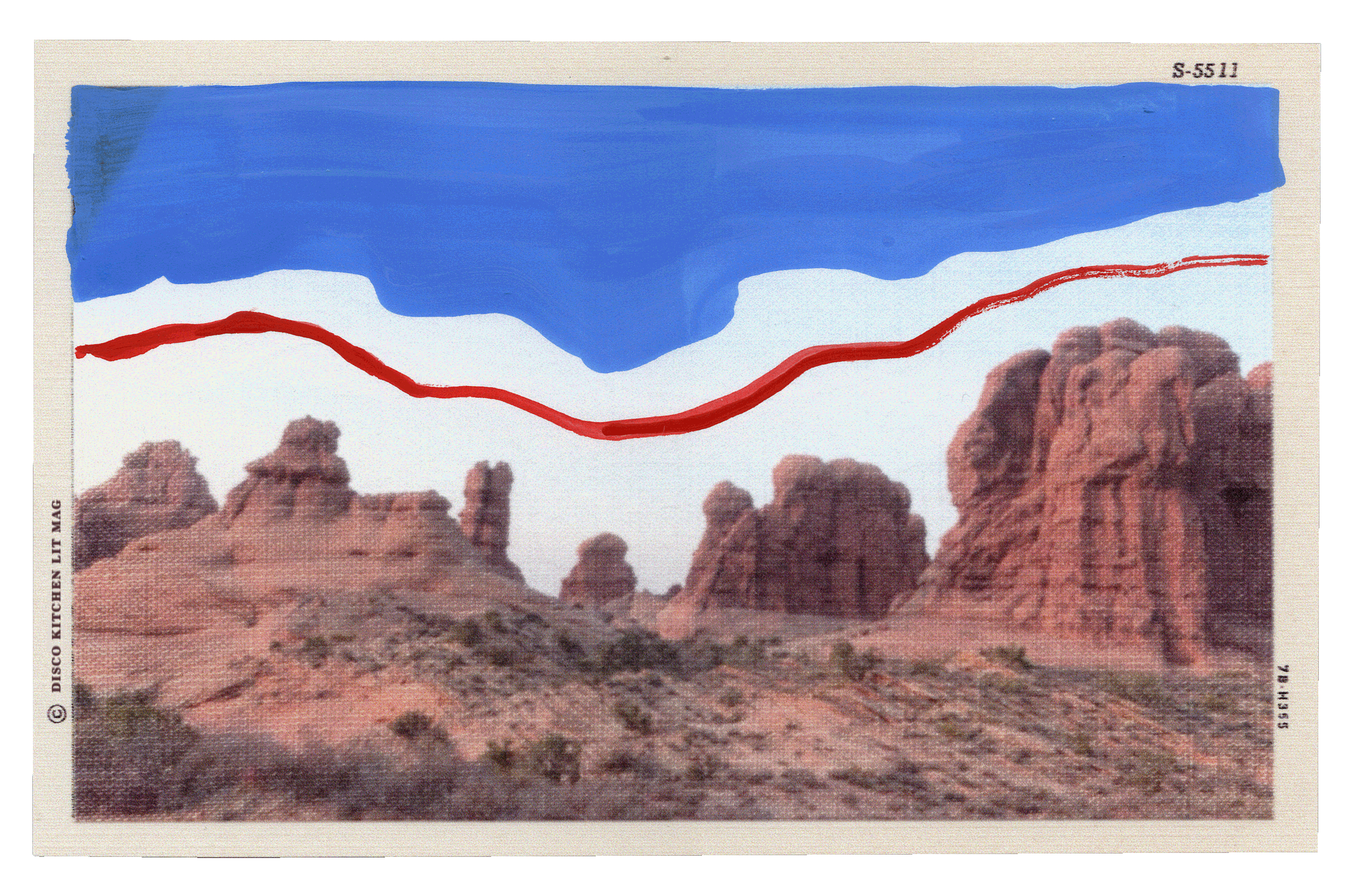ON BUCKLING
by Meghan Shannon
The first big vacation I take with my partner happens six years after we start dating. We drive out to our day-one destination in our miracle car, a 2009 Subaru Outback with 150,000 miles locked in the engine. These details, the Subaru, the going west for the first time, make me feel like an archetype. The front left side of the Subaru has a series of zipties, holding the plastic of the bumper in place—a collection of car fangs. Days before, we buy headlamps and a large blue jug to hold water, torso-sized. Josué fills up the jug with Chicago tap water. He walks around the apartment with his headlamp. He lays on our hard apartment floor to “practice sleeping.” We are not campers, and we are not survivalists. Sometimes, I joke with my friends that if/when the apocalypse happens, I will simply lie down.
Driving west in the mountains, there is large fencing along the highway, hugging the boulders in place. All of the surrounding rocks are wrapped in a metal mesh to prevent them from sliding into the road. We’re on our way meet our friend Mika in the desert where she is taking us to Arches National Park. We camp on public land the night before in a van that doesn’t sleep three people. At 1:00am, it is ninety degrees. I sit on a camping chair and dump cups of water on my head from our big blue jug. I think that, maybe, I could sit in our Subaru and turn the on air conditioning for ten minutes. I forget that, hours earlier, we put a tumbleweed in the driver's seat, because a tumbleweed, to Josué and I, is a novelty.
Two years ago, a hiking trail at Pictured Rocks is destroyed when a large chunk of the rockface collapses into the water. When I was nineteen, I remember sitting at the shore of Lake Superior and pulling handfuls of limestone from the rock formation, making an indent the size of a basketball, unaware. What else buckles under force? The ‘U’ from the Dunkin Donuts sign on Throop, fallen into a nearby shrub—Dunkin Dont’s. Concrete punctures in North Carolina’s Fork Reservoir dam, the lone sandcastle at Foster Beach, Mount Rushmore with 145 cracks and counting, my bank account, ecosystems.
We get to Arches at noon and it is 107 degrees. Mika, our guide, our van camping leader, pushes Josué and I further up the trail. We see a series of petroglyphs, small horse figures carved into the cave wall. The trail to the largest arch in the park is up a curved hill. It is mighty—two anchor points on either side of the landscape, like arms reaching into the earth. A group of us gather around the base of the rock rainbow, looking up and walking under. This National Park sees over a million people per year. When I am under the arch, I wonder when it will eventually fall, too.
Meghan Shannon is a writer and visual artist based in Chicago. Her essays explore grief, identity, and pop culture's influence on our lived experiences. She holds an MFA in Nonfiction Writing from Columbia College Chicago. Her debut short film, Good Grief, is set to premiere October 2024.


